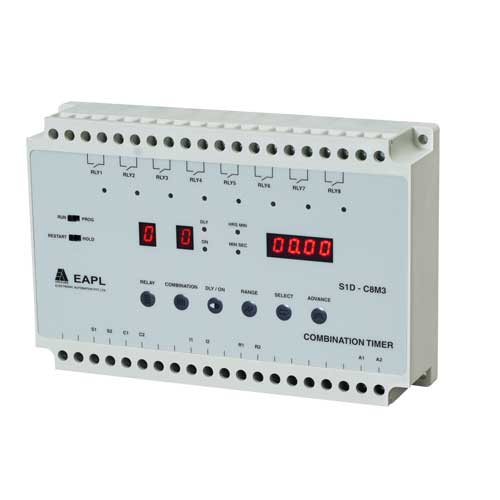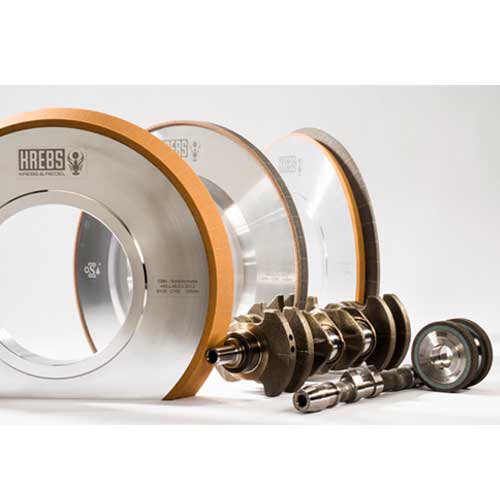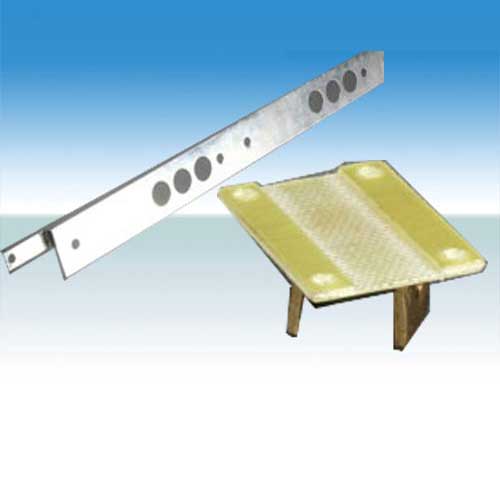Schedule a Call Back
Indian Auto Components Industry: On an Overdrive
 Technical Articles
Technical Articles- Jun 03,11
India is expected to witness strong growth in vehicle production across all segments by 2020
By Ravichandran K
 India is fast becoming the global byword for the automobile industry. The recent recessionary trends in the USA and Japan's decision to temporarily shut down production facilities in its automobile companies have benefitted India greatly.
India is fast becoming the global byword for the automobile industry. The recent recessionary trends in the USA and Japan's decision to temporarily shut down production facilities in its automobile companies have benefitted India greatly.
A fast growing economy and low penetration have induced global automobile manufacturers to turn to India as a manufacturing base, both for domestic consumption and exports. Almost all original equipment manufacturers (OEMs) have drawn up significant 'India' plans.
 Local OEMs too are aggressive in exploiting the opportunities and have chalked out expansion plans. India's low cost advantage would drive automobile exports as well. Buoyancy in the automobile industry would naturally translate into a healthy growth for the ancillary auto components industry as well in the next 4 to 5 years. This low cost advantage would also drive exports of components from India.
Local OEMs too are aggressive in exploiting the opportunities and have chalked out expansion plans. India's low cost advantage would drive automobile exports as well. Buoyancy in the automobile industry would naturally translate into a healthy growth for the ancillary auto components industry as well in the next 4 to 5 years. This low cost advantage would also drive exports of components from India.
 Factors such as abundant low cost labour, local availability of steel, aluminium and natural rubber, a strong ancillary industry and 100 per cent FDI allowed in the sector, in addition to bright demand outlook, has attracted global auto majors to set up significant capacities in India.
Factors such as abundant low cost labour, local availability of steel, aluminium and natural rubber, a strong ancillary industry and 100 per cent FDI allowed in the sector, in addition to bright demand outlook, has attracted global auto majors to set up significant capacities in India.
The investments in component manufacturing are replicating this trend. Many global auto manufacturers are not only sourcing components from local players for their India operations but also for their overseas production.
 In many other cases, the global automobile manufacturers are setting up component manufacturing facilities in India for their local as well as overseas operations. Thus India is not only eyed as the hub for automobile production but also the epicentre to source components as well. The opportunity on demand side would come along with various challenges on profitability side. The challenges facing the sector are serious and need to be resolved before it can take advantage of the current situation.
In many other cases, the global automobile manufacturers are setting up component manufacturing facilities in India for their local as well as overseas operations. Thus India is not only eyed as the hub for automobile production but also the epicentre to source components as well. The opportunity on demand side would come along with various challenges on profitability side. The challenges facing the sector are serious and need to be resolved before it can take advantage of the current situation.
 For one, the auto component industry is a highly fragmented one. Not only is the auto components industry spread across the organised and unorganised sectors, there is an urgent need to raise capital, scale capacities, manage costs and flexibility of new assets; build R&D competencies, product development, design and frugal engineering capabilities; and build robust organisations, to manage significantly increased complexities and risks associated with growth.
For one, the auto component industry is a highly fragmented one. Not only is the auto components industry spread across the organised and unorganised sectors, there is an urgent need to raise capital, scale capacities, manage costs and flexibility of new assets; build R&D competencies, product development, design and frugal engineering capabilities; and build robust organisations, to manage significantly increased complexities and risks associated with growth.
In a bid to bring some order in the sector, Automotive Component Manufacturers Association of India (ACMA) the apex body representing India's auto components manufacturing industry, recently completed a study along with consulting firm Ernest & Young (EY).
 Realising the challenges, potential and need to cash in on the onset of a global boom, ACMA has come up with a paper entitled 'Vision 2020' that envisages the industry to grow five-fold by 2020; and cross the US$ 110 billion mark or over Rs 5 lakh crore. Of this, the domestic turnover can grow to Rs 4 lakh crore (US$ 80 billion) and exports scale up to another Rs 1.4 lakh crore (US$ 29 billion). The auto components industry can thus be an engine of India's economic and manufacturing sector growth, potentially contributing 3.6 per cent of GDP by 2020, up from the current 2.1 per cent.
Realising the challenges, potential and need to cash in on the onset of a global boom, ACMA has come up with a paper entitled 'Vision 2020' that envisages the industry to grow five-fold by 2020; and cross the US$ 110 billion mark or over Rs 5 lakh crore. Of this, the domestic turnover can grow to Rs 4 lakh crore (US$ 80 billion) and exports scale up to another Rs 1.4 lakh crore (US$ 29 billion). The auto components industry can thus be an engine of India's economic and manufacturing sector growth, potentially contributing 3.6 per cent of GDP by 2020, up from the current 2.1 per cent.
To achieve this potential, the auto components industry would require investments of over Rs 1.6 lakh crore (US$ 35 billion) during the period. It will also create employment opportunity for over 1 million skilled people.
According to the ACMA-EY study, India is expected to witness strong growth in vehicle production across all segments by 2020.
- Passenger Vehicles - projected to be 5 million units by 2015 and over 9 million by 2020 driven by domestic demand and as a global hub for exports of small cars
- Commercial Vehicles - volumes of over 1.4 million by 2015 and over 2.2 million by 2020. Small Commercial Vehicles (SCV), a relatively new segment, expected to grow 28 per cent annually over the next few years
- Two & Three Wheelers - expected to double to 22 million units by 2015 and reach 30 million by 2020 driven by low penetration levels, expanding rural sales and growth in exports
- Tractors - projected to be over 0.7 million by 2015 and over 1 million by 2020 with steady growth expected in domestic and export volumes, and
- Construction Equipment - likely to grow 2.5 times to 0.1million units by 2015 and almost double to 0.18 million by 2020 driven by the infrastructure sector.
 Increasing cost pressures is driving OEMs towards low cost country (LCC) sourcing. In order for the Indian component manufacturers to stay competitive, among other things, they will have to move up the value chain. Many different regions around the world are fast becoming centres for LCC sourcing; India will have to be wary of these.
Increasing cost pressures is driving OEMs towards low cost country (LCC) sourcing. In order for the Indian component manufacturers to stay competitive, among other things, they will have to move up the value chain. Many different regions around the world are fast becoming centres for LCC sourcing; India will have to be wary of these.
Though the auto components industry is one of the most vibrant sectors in the Indian economy and a major foreign exchange earner, the pressure of competition would trickle down to a fragmented auto component industry with weak bargaining power.
Component manufacturers find it difficult to pass on the rising costs to the cost-sensitive replacement market. Thus, opportunities on the volume front could easily be overshadowed with the pressures on margins. The top-line growth may not fully percolate down to the bottom-line. Thus, the players need to be innovative in reducing their costs and improving their productivity to maxi-mise their profitability.
There are well over 400 major players in the auto components sector. Most of them are distributed in the north, south, and, western parts of India where major Automotive Vehicle Manufacturers (AVMs) are present. These AVMs contributed largely towards the development of component suppliers through technical and or financial collaborations.
The automotive component industry manufactures a wide range of parts including castings, forgings, finished, semi-finished components, assemblies, and sub-assemblies for all types of vehicles produced in India.
The OE market is predominantly catered to by the organised sector. The 400 odd organised producers, along with 6000 ancillary units, contribute around 80 per cent to this market. Presently, these manufacturers have grown in size and numbers beyond the control of OEMs. They control about 65 per cent of the aftermarket.
However, in the unorganised sector there are approximately 5000 Small Scale Industries (SSIs). The direct employment generated by the medium and large firms in the organised sector is 2,50,000.
No actual figures are available for the unorganised sector. However, ACMA and noted research agency Nielsen have attempted to size up the aftermarket. The study reveals that the auto aftermarket can be valued at Rs 330 billion with components accounting for Rs 248 billion.
Primary research showed that approximately 50 per cent of total vehicle parc, on-road vehicular population, exceeded 94.7 million in 2010. PARC stands for the number of vehicles in comparison to the population, geographical spread, the make, model and body style, age breakdown (upto 25 years), fuel type, transmission, engine type and capacity, emission norms, etc. One more, challenge, and a very serious one at that, comes from the auto component counterfeiting market, now estimated at Rs 87 billion. The industry has advocated a strengthening of legislative framework to tackle this problem.
Tamil Nadu, with its large number of auto OEMs, has an estimated share of 25 per cent in the Indian automotive Industry with current annual output estimated at US$ 3-3.5 billion and its contribution to the State's Gross State Domestic Product is 7-8 per cent.
Tamil Nadu's auto components sector constitutes 35 per cent of India's auto components production that is produced in units situated in Chennai.
The ACMA-Nielsen study has put the value of the Indian aftermarket of on-road vehicles at Rs 330 billion in 2010 with 25 per cent on account of servicing (labour charges) and the remaining majority from components, putting the total components aftermarket at around Rs 248 billion.
Two-wheelers were the top contributors to the total aftermarket at 46 per cent; three-wheelers contributed 3 per cent, while PVs and CVs had comparable contributions at 26 per cent and 25 per cent, respectively.
The leading States for components' aftermarket of CVs were Maharashtra (Rs 7.3 billion), Gujarat (Rs 6.1 billion) and Andhra Pradesh (Rs 4.3 billion), together making up for 31 per cent of the segment total. Delhi at Rs 1.8 billion, Chennai at Rs 1.7 billion followed by Bangalore at Rs 1.5 billion were the leading contributors among surveyed cities.
In terms of automotive aftermarket, the replacement frequencies as well as preventive maintenance behaviour was very different in lower tier towns and rural markets as compared to large cities.
These consumer segments are extremely cost-sensitive, spends are low, preventive maintenance outside warranty is rare and replacements are often low cost unbranded or even spurious.
Going forward, the expansion of OEM-authorised service stations and organised multi-brand service chains, implementation of a GST and the ongoing campaign against spurious component manufacturers are key developments that will shape the Indian automotive after-markets.
(Photographs used are for representative purpose only)
Ford Increases Capacity at Chennai Engine Plant
Ford Motor Company has announced that it would in vest US$ 72 million to expand its powertrain facility in Chennai to further support its sales and export growth plans in India. When the expansion programme is completed in mid-2012, the engine plant's production capacity will increase from 250,000 to 330,000 units per year, an additional output of 80,000 diesel engines annually. The expansion of diesel engine production capacity will bring Ford's total investment in India to more than US$ 1 billion.
"This investment reinforces the importance of our Chennai plant and Ford's continued expansion in India," said Mr Michael Boneham, president and managing director of Ford India. The new investment is part of Ford India's transformation into a major global export and manufacturing hub - 1.6 TiVCT, 1.4 HC and Duratorq engines will be exported from the country.
Currently, the plant produces five Duratec petrol engine variants and one Duratorq diesel engine variant for Ford vehicles. It is also gearing up to produce powertrains for Ford's all-new global Fiesta sedan to be launched in India later this year.
Since June 2010, more than 4,000 India-built 1.4L and 1.6L petrol engines have been exported to Thailand every month. Diesel engines have also been exported to South Africa since 2008 and Ford plans to export India-built petrol and diesel powertrains to more markets in the near future.
Related Products

Combination Timers
Electronic Automation Pvt Ltd offers a wide range of combination timers.

Cbn and Diamond Tools
Krebs & Riedel Abrasives India Pvt Ltd offers a wide
range of CBN and diamond tools.

Connectors
G R Enterprises offers a wide range of connectors.














